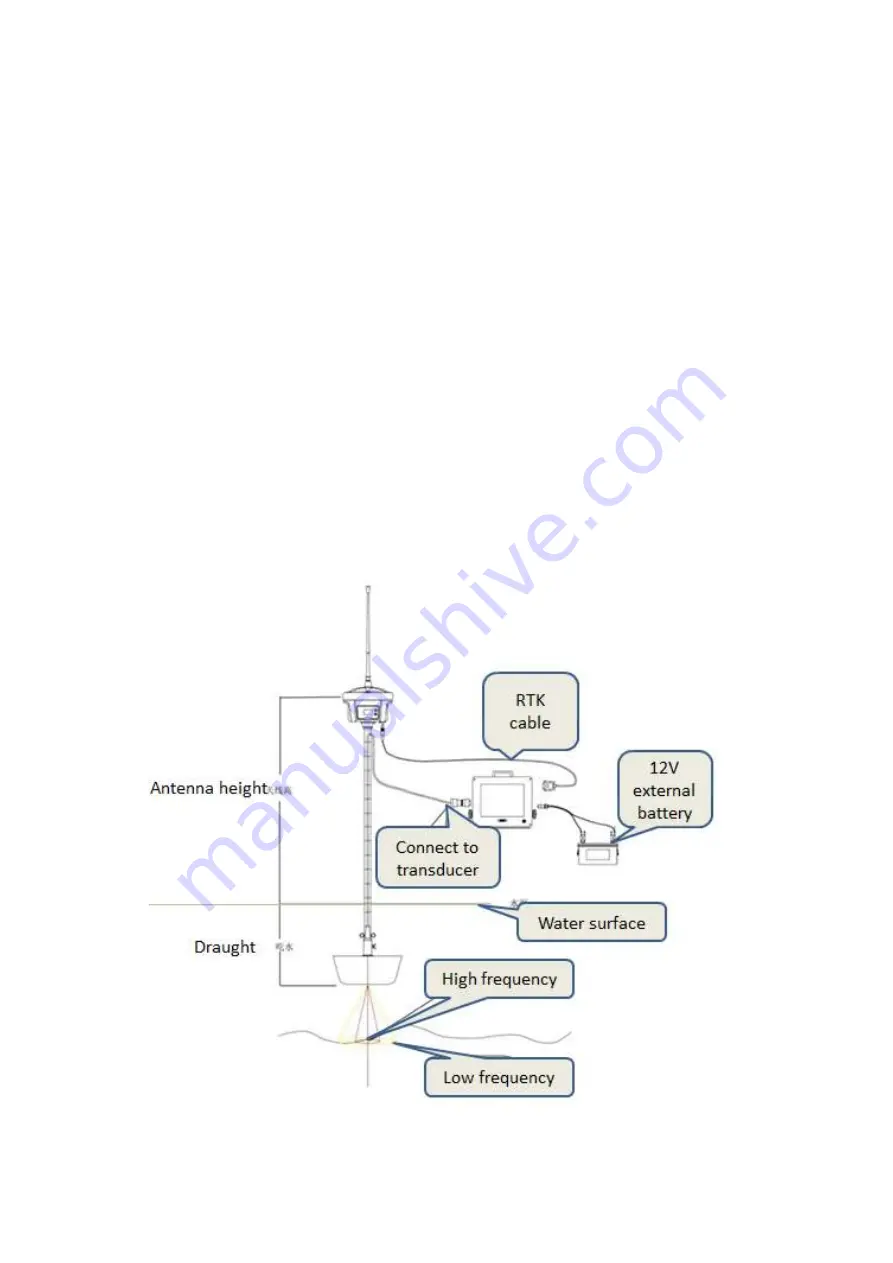
out by increasing the reinforcement of the forward rope and the backward rope, considering the
drag force from the flow and the gesture of the driving boat. Working at sea, to put the transducer
into water a bit deeper is necessary; faster the boat, the deeper the transducer into water. In
general, working at sea, the transducer draft is better between 1.2 and 1.4 meters; in inland river,
the transducer draft is more than 0.5 meters (considering the length of pole and the operational
needs). At sea, if measure under larger surge conditions, transducer draft muse be deepened, to
avoid massive depth errors caused by surges. When mounting the transducer, must keep the
juction pole vertical, reinforce and prevent loosening of the probe.
4.2, GNSS receiver connection
Mount the GNSS receiver onto the pole, then connect it to COM1 or COM2 on SDE-28S+ via serial
cable. Switch on the receiver and configure it to achieve the reliable solution, then go to the
HySurvey software to configure parameters to receive data stream from GNSS receiver.
Fig.4-2 GNSS receiver installation



































